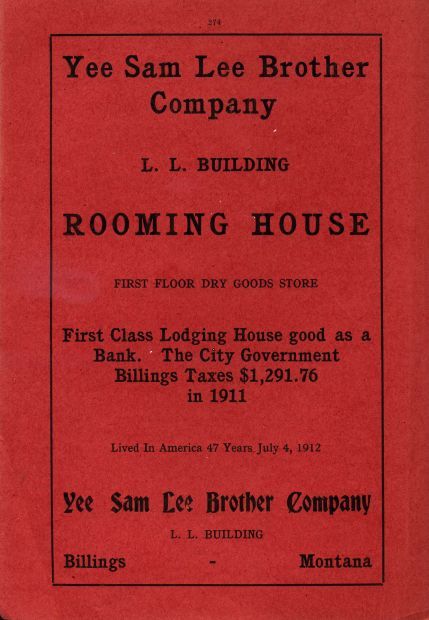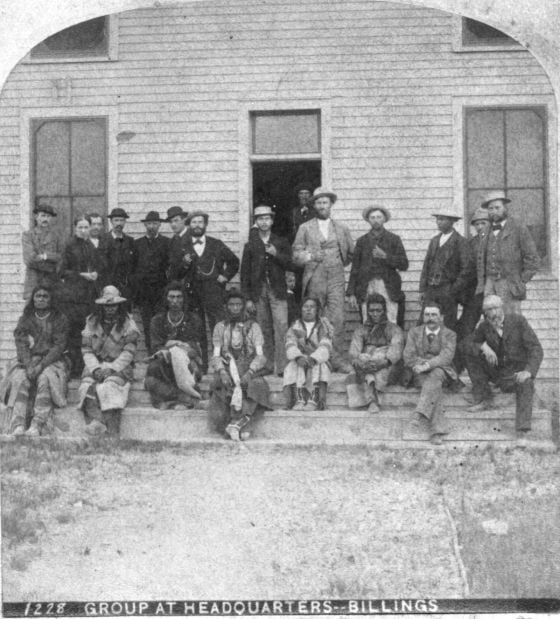


Menu
close



PBS has a series called Somewhere South about food. One episode on dumplings features a Korean American chef in Durham and Chinese families in the Mississippi Delta. One of the people interviewed noted that the community used to have MANY Chinese markets. The program includes a visit to a collection of Chinese grocery store artifacts and a visit to a still-operating store (kool-aid pickles anyone?). https://www.pbs.org/video/dumpling-dilemma-wxy3aj/
NPR also reported on the Mississippi Delta Chinese: https://www.npr.org/2017/03/18/519017287/the-legacy-of-the-mississippi-delta-chinese
Fred Gale's second lecture has much on food safety issues, including differences between the US and China. Lucy Hornby's 2018 presentation on soil contamination and how it poses a threat to safe food: https://china.usc.edu/watch-presentations-environment-and-food-panel-china-finding-solutions-conference
Deborah Brautigam spoke at USC on this topic: https://china.usc.edu/video-deborah-brautigam-china-and-africa
Sun Dawu is not your typical pig farmer. He built a multi-billion dollar enterprise. Earlier this week he was sentenced to 18 years in prison. This is not so much a food story as one about the increasingly tense relationship between the state and entrepreneurs. But Sun ran afoul of the authorities in publicizing the devastation of the swine fever outbreak.
SCMP April report on his formal arrest:
https://www.scmp.com/news/china/politics/article/3131173/chinese-agri-tycoon-sun-dawu-faces-trial-after-land-dispute
Report on his conviction and sentencing:
https://www.cnn.com/2021/07/29/business/sun-dawu-prison-sentence-china-intl-hnk/index.html
I agree completely with Jenny and Lauren that Chinese food is American food. I do hope others take up the challenge of identifying towns where Chinese immigrants were a key part of the early boom town history phase. The Museum of Chinese American History in NYC had an exhibition some years ago which drew on menus from Chinese places over the decades.
Lauren cheered for Butte during our session. It had a population of 24 in 1870, but more than 30,000 by 1900. That's a boom town.
https://www2.census.gov/library/publications/decennial/1900/bulletins/demographic/33-population-mt.pdf
I've spent a bit of time in Billings, talking to a company there that was eager to court business from China. In 1890, Billings had 836 residents and in 1900 3,221, nearly quadrupling (it's now the state's biggest city). But the census report linked to above doesn't break down the population by ethnicity. More digging needed. In 2019, Billings had just 942 persons of Asian descent out of its 110,000 residents. The Asian share was likely much larger a century-plus ago. Below are two pictures highlighting the Yee Sam Lee rooming house, which is still standing.


These images were published by the Billings Gazette: https://billingsgazette.com/news/local/yee-sam-lee-and-billings-chinatown/article_272c5cd6-d725-5ab7-a77c-b8bb5c6c862a.html
Missoula-based Greg Standberg has included some background on Chinese in Montana in his blog: http://www.bigskywords.com/montana-blog/a-history-of-montanas-early-chinese Standberg notes that 10% of the state population was Chinese in 1870, but that by 1880 it had fallen to 5%. Despite this, the Chinese Exclusion Act was adopted in 1882.
One interesting symbol that you'll see in Billings is at the old train depot (now a wedding destination and restaurant).
Yes, the railway company adopted the yin-yang symbol. According to the various sources, the railroad's chief engineer saw it at the Korean Pavilion at the Chicago World's Fair in 1893 and adopted it. It was Korea's first appearance at such an Expo.
https://koreajoongangdaily.joins.com/2012/07/02/features/Headed-for-Expo-2012-Road-to-Yeosu-begins-at-the-1893-Chicago-fair/2955445.html
Some may have had trouble with the presentation pdf. The glitch may be in the protections that Adobe has to block malicious programs.
You can download the file directly without a Dropbox account or without logging into to Dropbox.
I opened it with Adobe Acrobat, some may choose to open it with Firefox or another program. When I went to play the first video, it was blocked until I chose “trust this document.” (A message popped up in the Adobe Acrobat window indicating that multimedia content was blocked by default. Clicking the options button in that notice led to two choices “trust this document” or “trust all documents.” Once I chose Trust this document, I could click on the play button at the lower left of the slide and the video popped up.
The file is big, so it may take some time to download.
More on this is available at: https://helpx.adobe.com/acrobat/using/playing-video-audio-multimedia-formats.html
If you've played the three videos, please do comment on them below.
Hi Folks,
Great to meet many of you yesterday. Catherine and I are delighted to have you in the seminar. We're especially happy to have people from all across the US participating. Here's a request: please take and share photos with us of 1-2 East Asian restaurants in your area. It's great to learn about all these places, especially if you've dined there yourself. You can share them via the Teaching about Asia Facebook group or here in the discussion forum. Just a snapshot of the restaurant sign is fine. Please include the location (city or town is enough).
I have been teaching for a long time. I've taught at both the secondary and college level and in China and in California and Kentucky here in the US. My main fields are Chinese, Japanese and US history, though I've also taught English and journalism. I really enjoy travel, natural and urban parks, movies and books.
Below are three photos from Beijing Broadcasting Institute in 1984. The first is the dining hall and the next two are from an outing we took by bike and bus to Yuanmingyuan. Lunch in the faculty dining hall was about .3 yuan, it was mainly steamed rice with a bit of vegetables and meat. As our Chinese teachers can explain, the characters (L to R) call on folks to love the school, love students... I had camped a lot as a student, so was familiar with cooking outside. Still, I was surprised to see my students break out cooking equipment for our day trip. Yuanmingyuan is an important site with a very complicated and tragic story. The picture is of some of the ruins of a small portion of the complex that was designed in European style by a Jesuit painter/missionary. The complex was destroyed by British and French soldiers in 1860. 


Hard to be in the pork business in China. First disease wiped out half the hog stock. That's bad for producers and consumers. Then imports are hurt by trade sanctions. That's good for domestic producers, bad for comsumers. Chinese producers ramp up, the trade war eases. Now there's too much pork and the Chinese government is stepping to help.
Here's a note from the private (though still supervised) news organization Caixin (7/23/2021):
Once a bonanza for small farmers in rural China, raising pigs has become a loss-making endeavor as prices have slumped and costs have soared, forcing the government to start an emergency pork buying program and prompting a warning to producers not to use the market for speculation or gambling.
An oversupply of pigs and the rising cost of grain used to feed hogs, mostly corn and soybean meal, have been squeezing producers’ profit margins. The average market price of live hogs fell to 14.1 yuan ($2.18) per kilogram (kg) in late June, the lowest in more than two years, according to data from the National Development and Reform Commission (NDRC), while the cost of corn feed (link in Chinese) rose to a record high of 3.01 yuan per kg last month, data from the Ministry of Agriculture and Rural Affairs (MARA) show.
Hi Folks,
Sorry for the problems with the sound on the videos I played. New computer and for some reason it wanted to play the sound through my microphone. All good now. The presentation (in pdf form) with the videos (and sound) can be downloaded at:
https://www.dropbox.com/s/onm6lnjtwr25bw7/dube-2021-food-matters-introduction.pdf?dl=0
It's a big file (121 mb) because of the embedded videos. Please feel free to use it with students, but please DO NOT post it to the net or otherwise share it. Please do comment further on the videos (including the full length version of the Chopsticks video.
We don't have recorded lectures for our opening session. We do have three topics, however, to look at ahead of the discussion on Thursday, July 22. We can talk about them and a few other issues during our session.
1. McDonald's -- the corporate behemoth is not as popular as KFC in China, but represented an early culture/business entry. You might contrast the reception of McDonald's in China with the demonstrations that greeted it in France.
As you read the compilation of articles about McDonald's in China (see below), please consider:
- what is the mix of the global and the local that McDonald's seems to have gotten right?
- what caused McDonald's business fortunes have fluctuated in China over recent decades?
- what is the Big Mac Index? What does it purport to measure? (click here to learn more)
For McDonald's elsewhere in East Asia, start with Golden Arches East (2nd edition) (click here for an Education about Asia interview, the 2nd edition came out in 2006). For an interesting look at KFC's early years in Japan, check out this documentary by John Nathan in 1981. It is quite dated, but a good introduction to many issues. We can discuss it if you have questions.
2. Food Safety -- during our discussion, we'll look at food safety, food security and food sustainability, but here we start with a reading from anthropologist Yunxiang Yan. He wrote after a spate of scandals in China, including the milk powder scandal that harmed thousands of infants and still causes Chinese to buy foreign milk powder when they can. As you read, please consider
- how do food safety risks stem from premodern dangers?
- how do those risks stem from modern hazards?
- how do worries over food safety fit into the issues of social cohesion and social trust?
3. Selling Salmon -- this 16 minute podcast from NPR examines the campaign to get Japanese to eat raw salmon. Wait, you mean they haven't always done that? Click here to listen. And also please read this story about how giving the Nobel Peace Prize to Liu Xiaobo complicated salmon sales.
- how did very different political decisions affect salmon sales in East Asia?
- what cultural and business factors were also at play?
Please offer your comments or raise questions about ideas in these materials. Any ideas on how you might incorporate the issues discussed or utilize the examples given in your classes? What might you do with your students?
Those interested in how the imperial family's handlers sought to use interest in them to convey ideas about Japan as a modern nation may find Sally Hastings's short 1993 article on The Empress' New Clothes of use (attached). Perhaps your students might create presentations to discuss how and why clothing might have changed. Which colors are favored? Why might some styles dominate certain moments, including highly ritualized moments in a person's life.
Kimonos are the frequent subjects of museum exhibitions and you can find some great resources there. LACMA had one on kimonos for a modern age. The press kit and a few images can be found at: https://www.lacma.org/sites/default/files/Kimono-for-a-Modern-Age-advisory_0.pdf Kimono Refashioned (Asia Art Museum): https://exhibitions.asianart.org/exhibitions/kimono-refashioned/ Victoria and Albert Museum in Britain: Kimono: From Kyoto to Catwalk https://www.vam.ac.uk/exhibitions/kimono-kyoto-to-catwalk
Please share any you find interesting.
Morgan introduced this wonderful scene from Rikyu: https://www.youtube.com/watch?v=WqyvY9UDoNM (the clip seems to have lived on Tudou, the Chinese video site, before making it to YouTube).
I was hoping that Rikyu (1989, dir.: Hiroshi Teshigahara) would be available from a streaming service, but it doesn't seem to be offered by the major US services. It is available for $12-15 plus shipping/handling from various sites (for example: http://www.vendio.com/stores/STUFFYOUWANTED/item/rikyu ).
Footbinding is an important topic. It's not clear what portion of women in various periods had bound feet. It seems that in the last several centuries that it was not generally practiced in rice growing regions of the South. Women there worked in the fields and bound feet were an impediment. Wealthier families, where women wouldn't work in the fields, did bind women's feet. In the North, where women often only worked at home and not in the fields, footbinding was more widespread. Major ethnic minorities did not bind women's feet.
Here's a post I wrote a long time ago on the topic: https://china.usc.edu/comment/26841#comment-26841
Excellent points about possible uses of these primary sources and the possible need to steer clear of them. I noted that Marco Polo inspired Columbus and is among the most widely distributed and translated texts. I highlighted a couple comic book versions. I've not tried, but perhaps your students might, to compare them with more traditional texts.
(1946)
https://archive.org/details/ClassicsIllustrated027TheAdventuresOfMarcoPolo